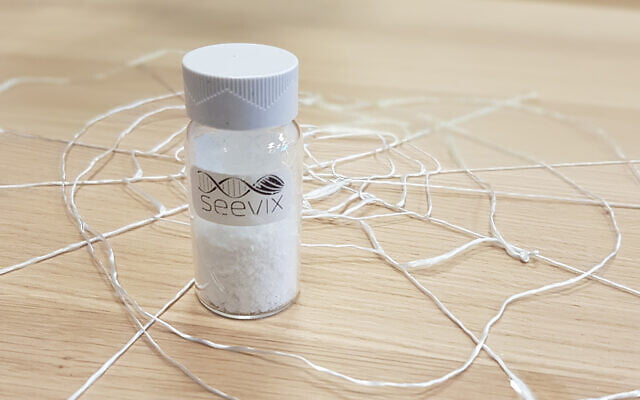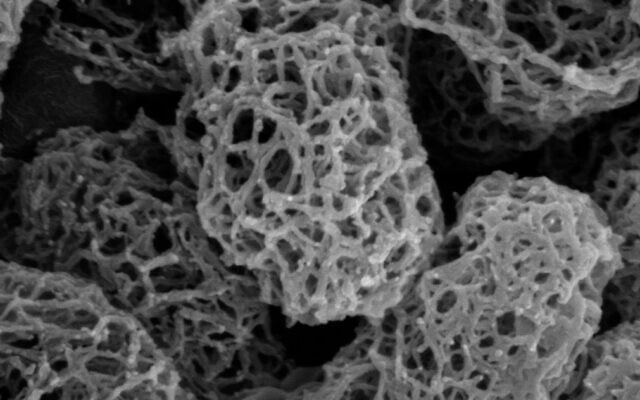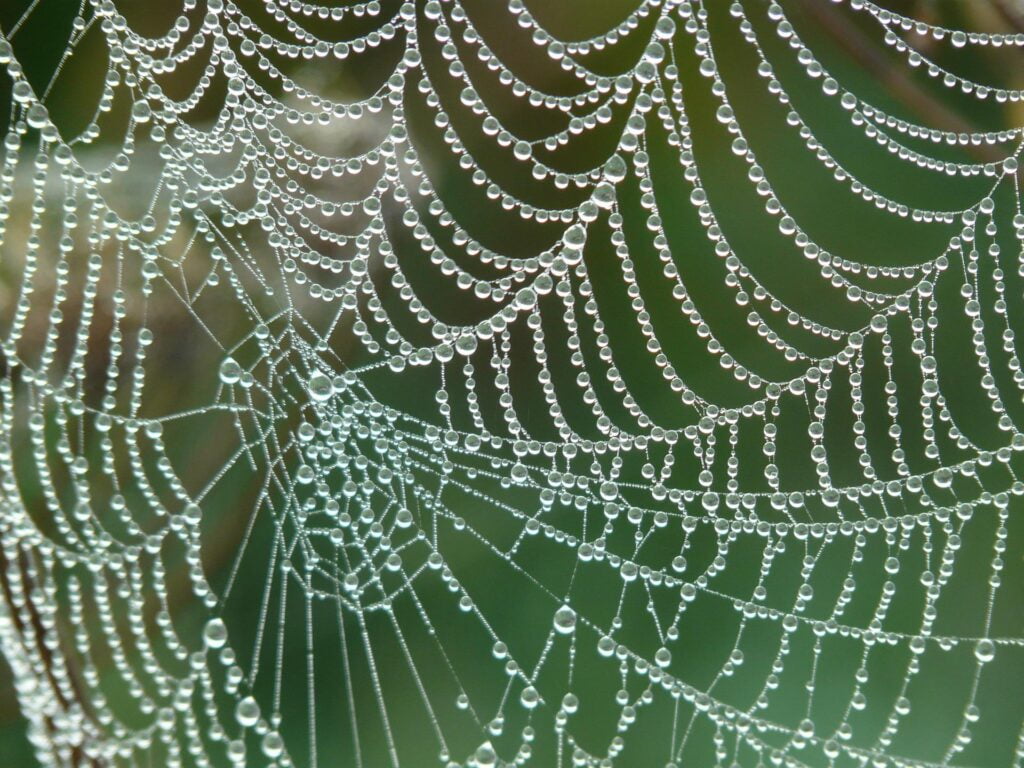In the 2017 Spider-Man: Homecoming movie, actor Tom Holland’s character Peter Parker decides to make his own webbing in his high school chemistry class. He could have made it out of anything — fishing line, wire — but he chooses to replicate spider silk.
Why spider silk? The protein fiber used by spiders to make their webs may look delicate, but it’s actually at least five times stronger than steel and one-fifth of its weight.
“The combination of strength and elasticity makes the material very unique in terms of its ability to absorb energy,” says Shlomzion Shen, an Israeli scientist with over a decade of experience in biotechnology and medical device management, tells NoCamels. “There are all kinds of calculations done by researchers around spider silk that say that if you have a spider web that has a diameter of a pencil, it can stop a Boeing 747 while flying.”
But while spider silk has many unique properties that make it extremely versatile – it’s used by spiders for transportation, shelter, trapping prey, and even courtship – Shen says spiders can also be extremely cannibalistic and territorial, and the quantities of spider silk can be very small. These reasons and others make it very difficult to extract their spider silk from nature.
During years of research at the Hebrew University of Jerusalem (HUJI), Israeli scientist and biotech expert Dr. Shmulik Ittah realized it was possible to “take the genetic code of spider silk and then synthetically engineer it into a certain biological production system.” Thus, Seevix was born. The company, co-founded in 2014 by Ittah and Shen, its current CEO, manufactures SVX, a biopolymer material, that was created and patented based on this genetic code. Seevix is a spinoff from the technology transfer arm of Hebrew University.
“We didn’t take the code from nature — the code from nature can’t be patented. We actually were able to understand in that DNA code, what is important to keep in order to generate the functionality of those proteins and in order to generate something that can be produced in a different biological system than the spider. This genetic code, which is unique to us, has been patented,” Shen explains.
Seevix seeks to “revolutionize material science” by using spider silk’s unique natural properties to create high-performance products that improve people’s lives. The team includes 15 employees made up of biologists, engineers, chemists, and engineers based in Jerusalem. The company has many private investors from around the world, including from Europe, Australia, and the US, Shen says.

Through a fermentation process, what is actually produced is a macromolecule, which is not a long spider silk fiber, adds Shen. It’s a small particle that is composed of the proteins that are being generated within the production system. These proteins self-assemble spontaneously into nanofibers. The nanofibers assemble into a sophisticated design of a macromolecule.
Even though the material comes in a powder and doesn’t look anything like the string one might envision as spider silk, “it really resembles the sophisticated design that nature provides that the spiders can produce. And that no artificial spinning can generate,” says Shen, calling it a material made up of the “holy grail” properties of spiders.
Cells, cosmetics, and cultured meat
In her role as CEO, Shen has aimed to find practical ways to make commercial use of the material, while being able to produce large quantities and keep it cost-effective.
Today, the material is used for a number of unique products including a vegan cosmetics product in development to protect hair and skin from pollution. It also has the potential to be used in technical textiles, bulletproof vests, plastics, and the automotive industry, according to Shen.
Sign up for our free weekly newsletter
SubscribeShe tells NoCamels that after the venture arm of Japanese sportswear company ASICS invested in Seevix in 2020, the company also began to develop sporting goods utilizing the firm’s SVX spider silk-inspired material. ASICS sportswear became the official apparel and footwear sponsor of the Australian Olympic Team and partnered with the Philippine Olympic Committee as the footwear and apparel partner during the Tokyo 2020 Olympic Games. In an exhibition at the Games, ASICS presented SVX as the core technology of its sportswear.
Shen also says products made with SVX can be made to be antimicrobial because of their surface area and loading capacity, which means they can be loaded with antibiotics and coated with copper and zinc.
“Think of the filters that can capture the virus or the bacteria, like the ones that come in masks,” she says.

The team behind Seevix first experimented with incorporating it into standard materials like nylon, polyurethane, and latex to generate sustainable mechanically improved materials that also had unique properties, like improved resilience and tear resistance. By 2018, Shen says the company had “switched the biological system in order to be able to produce higher amounts at relative costs.” Today, the company’s manufacturing facility located at the Hadassah Medical Center produces hundreds of kilograms of the material a year.
One product that the company has commercialized is using the material as a scaffold to grow cells “like a tissue or in a tissue format,” Shen explains. In order to grow in this way – in tissue format – the cells need mechanical support and need to be in their physiological environment. Seevix’s material is biocompatible because it is based on 100 percent pure proteins, which means it also has the mechanical capacity to give the mechanical support that is needed to grow cells in a 3D format as a tissue.
“Now, this, of course, can be a scaffold for tissue engineering and for tissue modeling, for bioprinting. But also for cultured meat,” Shen says, “If you want to. If you want to grow a cell to a steak, you need something a scaffold that will hold those cells as they grow to a stake tightly together and will hold them mechanically low.”
SEE ALSO: 7 Bee Tech Firms Protecting Bee Populations And Global Agriculture
In May, the Israel Innovation Authority (IIA) provided Seevix with a grant to set up their industrial manufacturing facility. Later that year, the authority invited the company to join its cultured meat consortium, one of four consortiums in cultivated meat, insect farming, fluid sampling for medical diagnosis, and human-robot interface, established by the IIA. The IIA approved $69 million over the next three years for these consortiums, a group of companies and research institutions coming together to develop joint technologies.
The ultimate goal is to incorporate the raw material into other products. “The business model for Seevix is kind of like an enabling technology with a material that is incorporated into a next-generation product. After the collaboration phase, we want them to produce the final product and sell it. So the final product will be sold by our partners after we sell them the raw material.”
Related posts

Editors’ & Readers’ Choice: 10 Favorite NoCamels Articles

Forward Facing: What Does The Future Hold For Israeli High-Tech?

Impact Innovation: Israeli Startups That Could Shape Our Future




Facebook comments